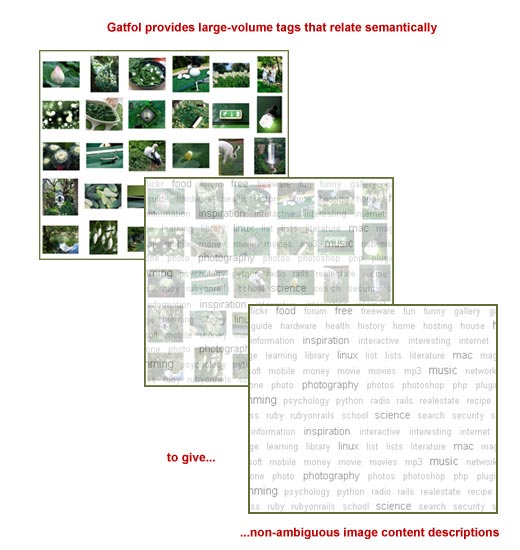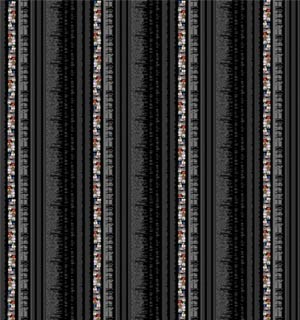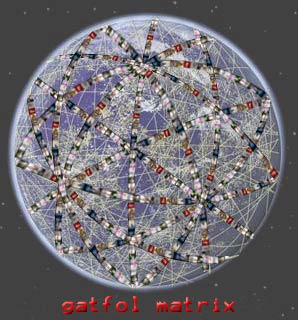Rich multi-level automatic image- and video tagging on a massive scale
Conservative estimates are that the billions of web images today have at most been semantically (word meaning) tagged to a mere 1% of completion.
The holy grail of photo search is to have unambiguous automatic machine recognition and tagging of images covering detailed image components.
Current technology “recognises” image detail to an accuracy level spanning substantial uncertainty around most- or all individual visual components. Gatfol provides a solution to “crystallise” individual image elements from vague collective descriptions using Semantic Intelligence Filter Technology (SIFT).
 With current automatic machine tagging every component or discrete pixel-grouping in an image can at best be labeled with several ambiguous descriptions each.
With current automatic machine tagging every component or discrete pixel-grouping in an image can at best be labeled with several ambiguous descriptions each.
At left we could be looking at a work bench with a painters cap and several containers with dark- and yellow paints and some metallic tools, perhaps a green picnic blanket with tea or coffee and vegetation against a light sky, perhaps a green corn field with white grain silo’s etc.
As long as ambiguous image content descriptions are available, Gatfol semantic intelligence is powerful enough to stepwise “crystallise” the ambiguities and provide large-volume detailed tags that all relate semantically.
This is the tag results for the image above from one of the only web auto-tagging services still available (ALIPR) :
 Even though utterly vague and descriptively extremely wide, Gatfol can proceed successfully from this (in all other ways) – incomplete start.
Even though utterly vague and descriptively extremely wide, Gatfol can proceed successfully from this (in all other ways) – incomplete start.
Gatfol semantic crystallisation is not only many-to-single down but also single-to-many upwards. Gatfol takes each of the supplied tags above and with SIFT iterates through wider and wider semantic word groupings, continuously checking back to available tags for matchings.
If the shiny object at the bottom of the image is not a small mirror, work tool, ball bearing, lightbulb or lens – but a teaspoon, the white object with dark contents is likely a tea or coffee cup with contents and not a bowl with soup – if coffee, then the white object with partial covering of a “hat” at right is not the “best fit” semantically. If a teacup, then the green striped object is likely a tea cosy with the white object adjacent, a tea pot. Given these crystallisations, the yellow blob at back is likely not paint, but either jam, butter or coloured ice cream. Given a “tea pot and cups” element grouping, the dark bands at back right is likely a chair structure, and given this, the light green object is semantically unlikely to be a picnic blanket or green meadow, but rather a table cloth. In this iterative manner a large volume of detailed tagging is obtained from a limited initial set of ambiguous descriptions.
Gatfol provides the base for rich multi-level automatic image tagging on a massive scale.
Gatfol adds huge search power through web images being labeled with a hundred or more component text tags each, instead of the one, two or three of today :






